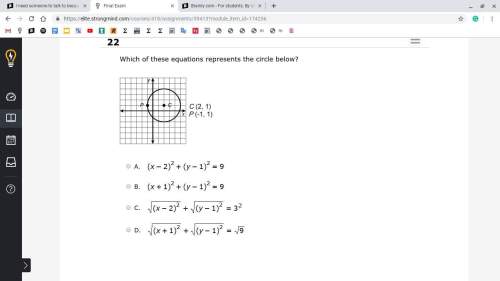
Mathematics, 10.12.2019 01:31 igtguith
Define the double factorial of n, denoted , as follows: ={1⋅3⋅5(n−2)⋅n} if n is odd{2⋅4⋅6(n−2)⋅n} if n is evenand (−1) = =1.find the radius of convergence for the given power series.[(8^n*n! *(3n+3)! *(2n))/(2^n*[(n+9)! ]^3*(4n+3))]*(8x+6)^n

Answers: 3


Other questions on the subject: Mathematics

Mathematics, 21.06.2019 17:00, cordovatierra16
Which graph corresponds to the function f(x) = x2 + 4x – 1?
Answers: 1



Mathematics, 22.06.2019 00:00, spencertodd742
Jonathan puts $400 in a bank account. each year the account earns 6% simple interest. how much interest will be earned in 5 years?
Answers: 1
You know the right answer?
Define the double factorial of n, denoted , as follows: ={1⋅3⋅5(n−2)⋅n} if n is odd{2⋅4⋅6(n−2)⋅n} if...
Questions in other subjects:


Mathematics, 13.01.2021 19:40

Physics, 13.01.2021 19:40





Advanced Placement (AP), 13.01.2021 19:40

Mathematics, 13.01.2021 19:40

History, 13.01.2021 19:40




